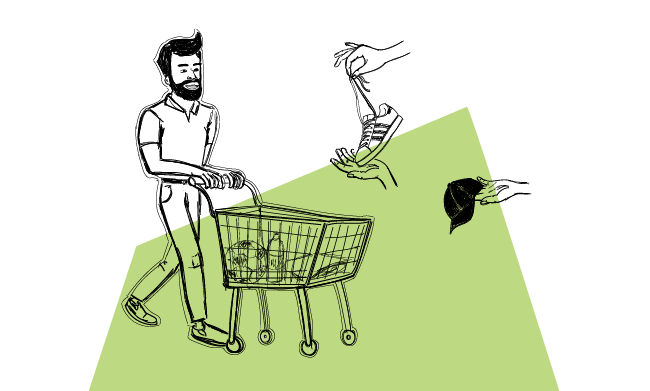Although an e-commerce sales process greatly differs from the sales we usually cover here, I believe there are some tactics that can be taken from it and applied to your own SaaS sales process. For instance, upselling or cross-selling on the order value. Let’s see how you can use e-commerce’s tactic of upselling and cross-selling to boost your sales.
What do “upselling” & “cross-selling” mean?
When you go to Starbucks, the barista usually asks you, “Do you want an extra shot of espresso in your coffee?” Something similar happens in McDonald’s where you’re asked whether you want to supersize your order. Well, that is upselling in real life. The seller wants to up the value of your initial order.
Cross-selling is when you’re offered an attractive accompaniment to the thing you’re ordering. For example, you’re offered fries to your burger, or to step outside of the culinary world references, you’re buying a new camera and you can get a discount on memory cards. All in all, customers buy an additional thing to their initial order.
Relevancy is key in upselling and cross-selling
The success in upselling and cross-selling comes down to the relevance of the offer. A prospective buyer can’t be persuaded to up the value of their order unless they can buy something relevant at the right time. That “relevancy” factor is decisive here. E-commerce stores are great at using it.
Whenever you’re ready to make a purchase, e-commerce stores remind you that you can either get more value by upgrading your purchase or buying an additional item. They do it at the right moment — when you’re about to check out. And since most B2C customers buy on the whim, checking out lends itself as a perfect opportunity to buy more.
Here’s an example of cross-selling. Sports shoppers want to buy a sports team jersey. They added it to the cart. Immediately after, the e-commerce store offers them a hat. The hat is relevant. It’s the same sports team hat. Will they buy it?
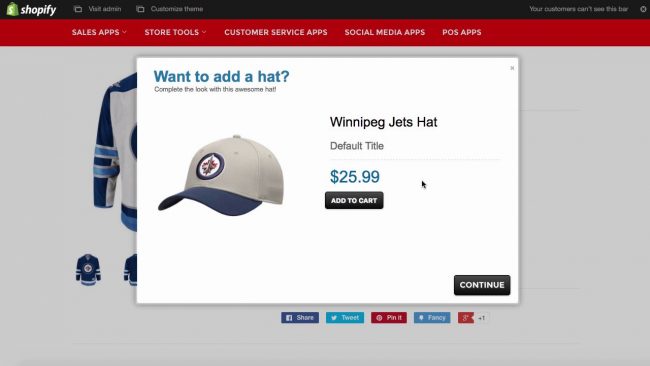
Or see an example from Amazon. Shop visitors want to buy an Xbox One. They will need a game to use it, so the shop will collect Amazon product details and offer them a combined deal. Isn’t that a relevant suggestion?
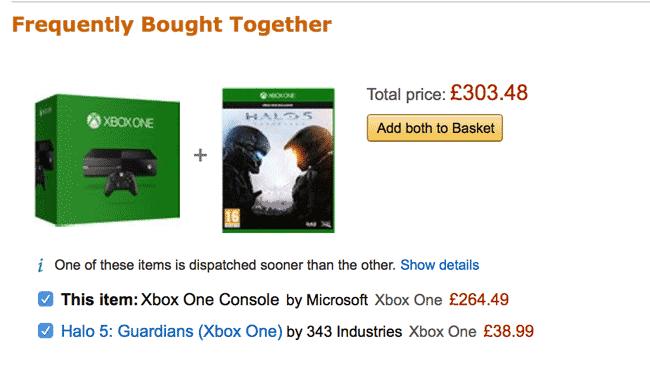
Those are just quick finds. But I’m sure that any big e-commerce stores have cross-selling and upselling figured out.
How to translate that into SaaS sales?
SaaS sales specialists also try those techniques. Upselling and cross-selling techniques are usually implemented on the pricing page. As soon as a website visitor has decided to buy a subscription, they check out your pricing page, so the right message on a pricing page can persuade them to buy more. And why wouldn’t a pricing page work at upselling and cross-selling? After all, it fits the relevance principle. A customer is ready to buy.
Nonetheless, there’s a major difference between B2B and B2C customers. Rarely does a B2B customer buy on the spot. The majority of B2B buyers need to develop a relationship with you or your product in order to make a buying decision.
Use the relationship that you have to up the deal value
You can leverage a relationship you have with your current customers and try to upsell or cross-sell to them in the future. You can increase the value of what they’re buying. But when? I would say that when the relationship between you and your customer is at its strongest, it’s best to hit them up with an upselling/cross-selling proposal.
Let’s say you clinched the deal some time ago. Yet, the time passed and you grew your offer. In the meantime, they developed their business. It’s a perfect opportunity for selling to them.
So, you have the first part covered. You have a relationship with them. But how can you tell if you fulfill the relevance principle?
Relevancy depends on what success means at your company
Relevancy stems from customer success at B2B companies. Once your customer is judged by you to be successful, you can cross-sell or upsell to them, as your offer to invest more in your product would make more sense to them. It’s all because they feel that they’re truly getting value from your product. It’s reasonable to invest more.
No SaaS companies are the same. They target different industries, different sectors, different decision-makers. Therefore, customer success means something different to each of them. After you define customer success at your SaaS company, you know when it is relevant to upsell or cross-sell on your product.
Upsell and cross-sell with email
Email is your secret power that unlocks an upsell and cross-sell potential at your SaaS company. Why would you use email? It makes sense because email is professional, scalable and it can be automated unlike a phone call or face-to-face meeting, so it can be used to follow up with clients around the globe. Let’s see how to approach upsell and cross-sell via email.
Now, when you have the success factor defined at your company, let’s ask your Customer Success Team to find those customers for us. In our case here at Woodpecker, such customers would be the ones who have all deliverability settings properly configured, have sent over the magic number of emails in their campaign, and have nice email statistics with just a few bounces and a lot of email opens.
And how would you describe your successful customers? Brainstorm with your Customer Success Team to find that out.
How to write an upsell email?
When you have your successful customer segment ready, it’s time to prepare your upselling campaign. Since we already have a good business relationship with them, we don’t need to worry about following a recognized email structure like the one in this blog post about cold email copy. It’s enough to check when you contacted them the last time as well as who was responsible for the contact and use this info as a reference.
Have a look at this upsell email example:
Hi {{FIRST_NAME}}, It’s been some time since our last chat. How is everything going? I hope your experience with our {{SNIPPET_1}} has been great so far. As I mentioned in the previous email, we’ve just released a new feature – {{SNIPPET_2}} – that I think you may find useful. Would you have 10 minutes this Wednesday for me to show you how it can improve your {{SNIPPET_3}}? In return for your feedback, I’d like to offer you a {{SNIPPET_4}} discount. Best Lisa
When you get down to writing your own upsell email, try to follow the same pattern. Have these points in mind:
- leverage your relationship with the customer,
- don’t be pushy and too salesy,
- offer value.
These are the three pillars of effective upselling and cross-selling a SaaS product.
Takeaways
I hope you feel inspired to create your own upselling/cross-selling process. I would love to leave you with those few takeaways:
- you can learn a lot from e-commerce businesses
- relevancy matters a lot for your offer to strike the right chord
- define a success factor and create an upsell/cross-sell strategy around it
- use email to upsell or cross-sell on your B2B offer
Are you going to give it a try? Please don’t hesitate to share in the comments how it goes.
READ ALSO
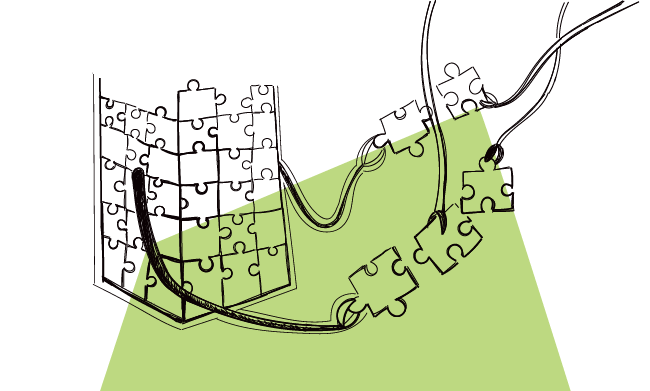
Why Integrations Are Your Growth Engine in SaaS?
Have you just gained your first 100 customers? Congratulations! It’s your first big milestone. As your company is gaining traction, your next steps should be to increase the value of your app to the current users and maintain further growth of your customer base. It may seem difficult to find the right balance with limited resources, but there’s a way to achieve both goals in one fell swoop. Keep reading to find out more.
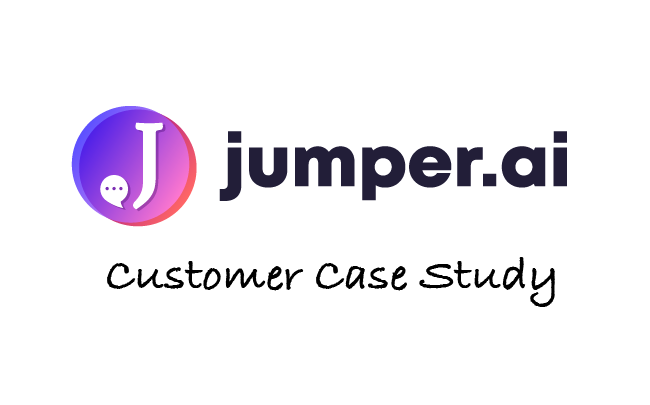
How SaaS for E-commerce Can Generate Leads Through Email: Jumper.ai
Positive feedback from a satisfied customer is always a huge motivator that gives us wings. Recently we had a pleasure to interview Jumper.ai team who shared their experience with Woodpecker and told us a few words about how it helped them reach new customers. Read the full story below.
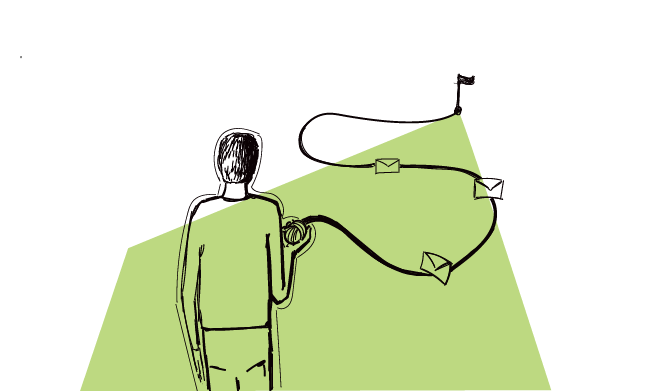
How to Scale New Client Onboarding Process in Your SaaS without Losing a Personal Touch?
Your sales team puts a lot of effort into finding the right prospects and starting a relationship with them, warming them up from cold to sales-ready. But conversion is not the end of a customer journey. It’s actually just the beginning. And if you want to maintain the relationship your sales team has started, it’s very important to take care of your customers’ experience from the very beginning.

